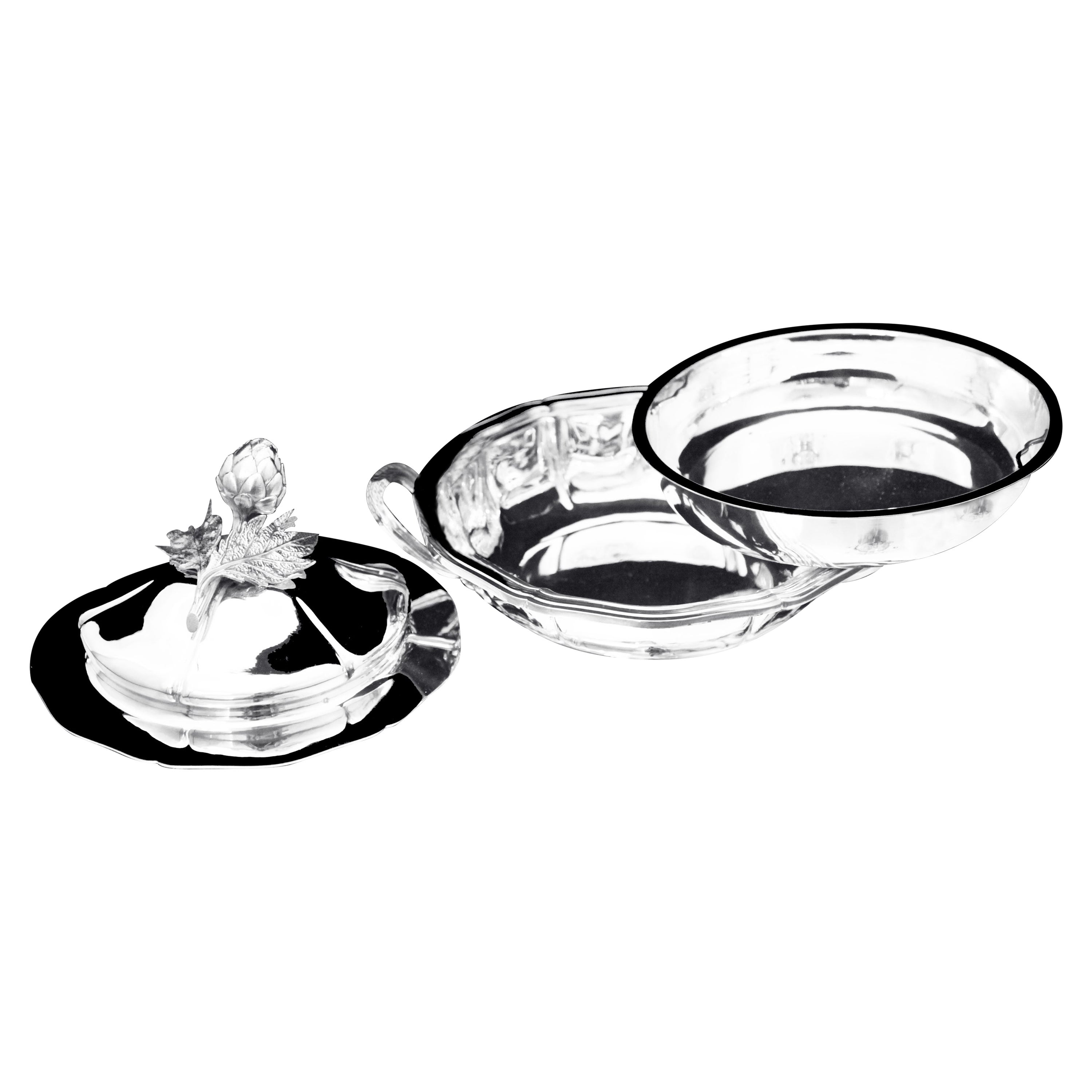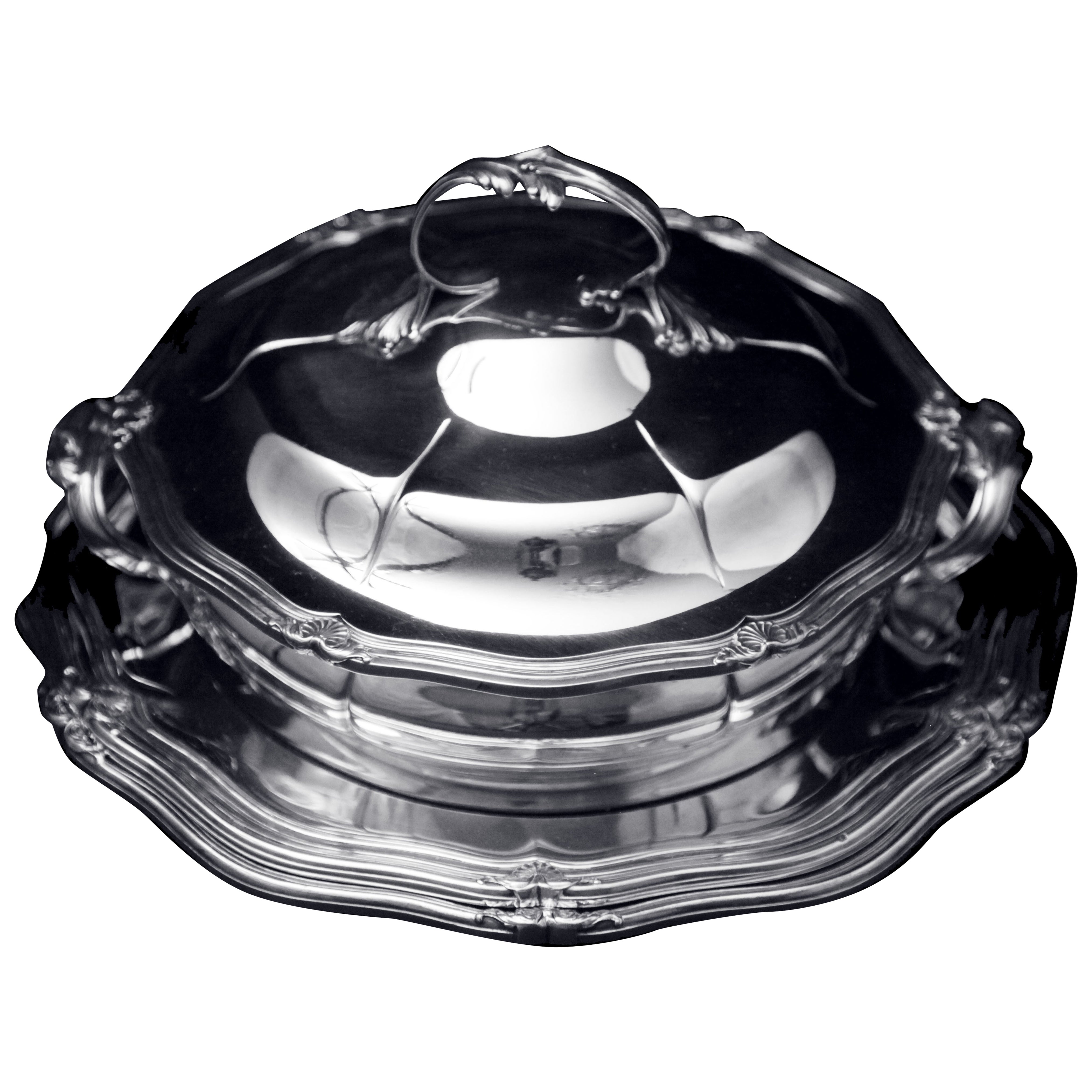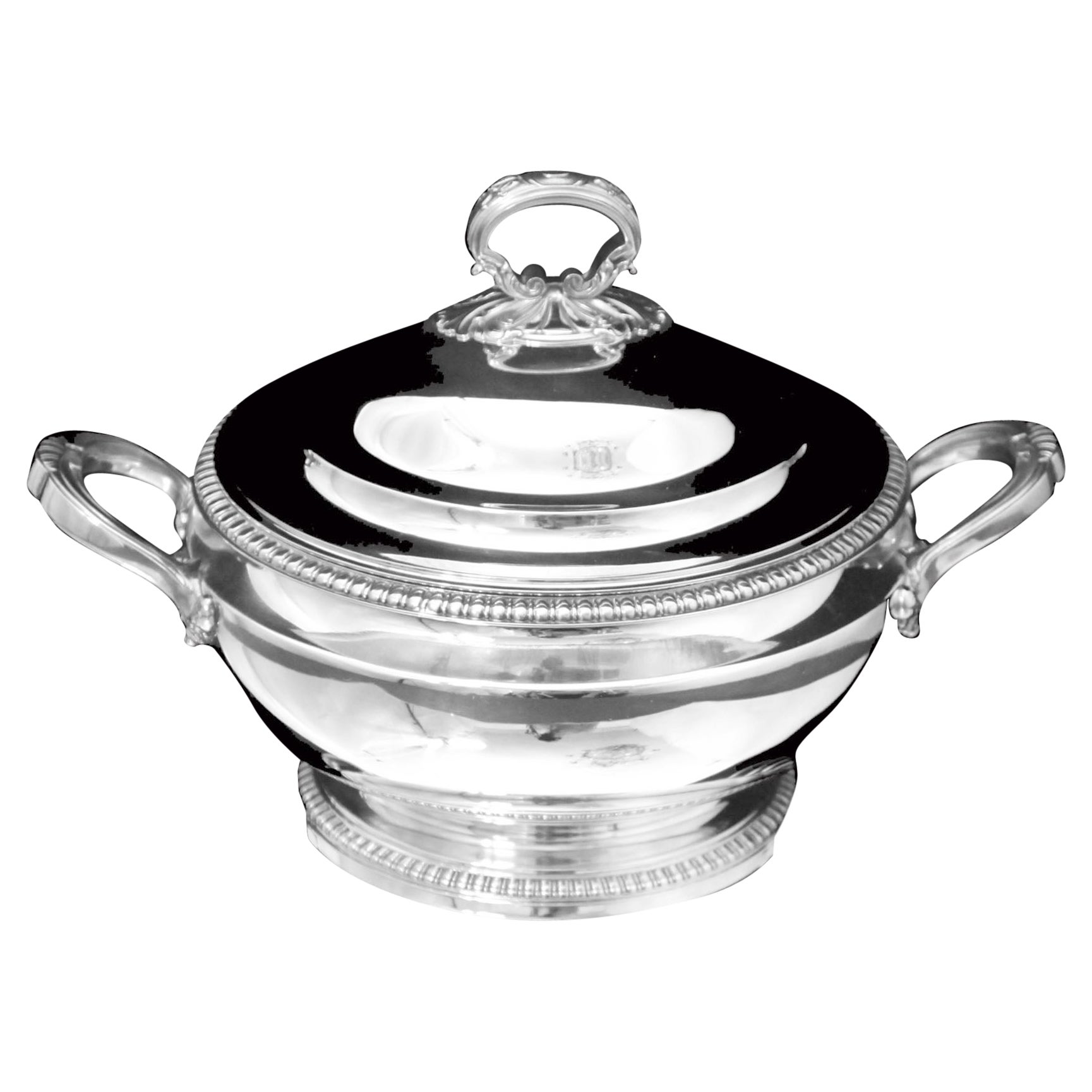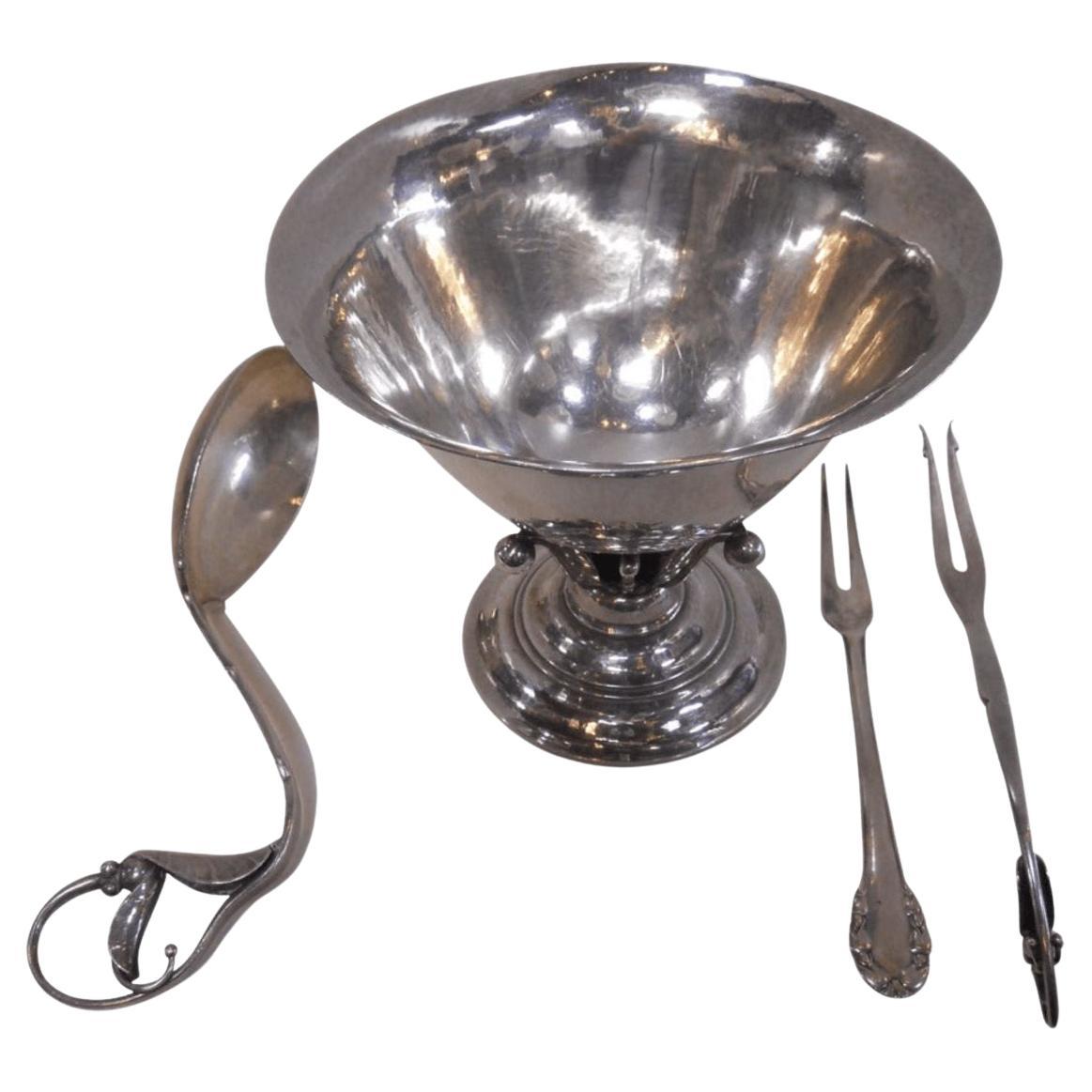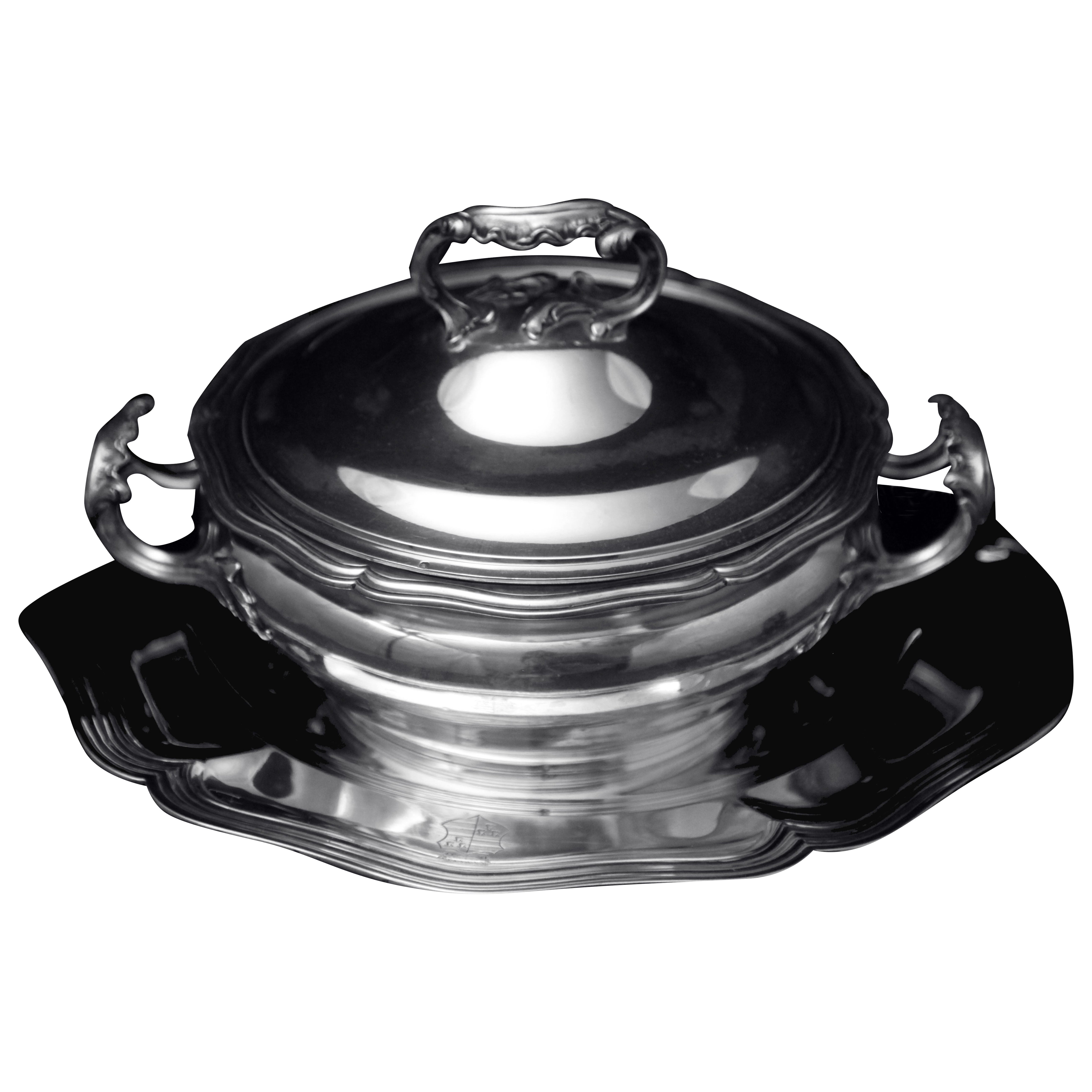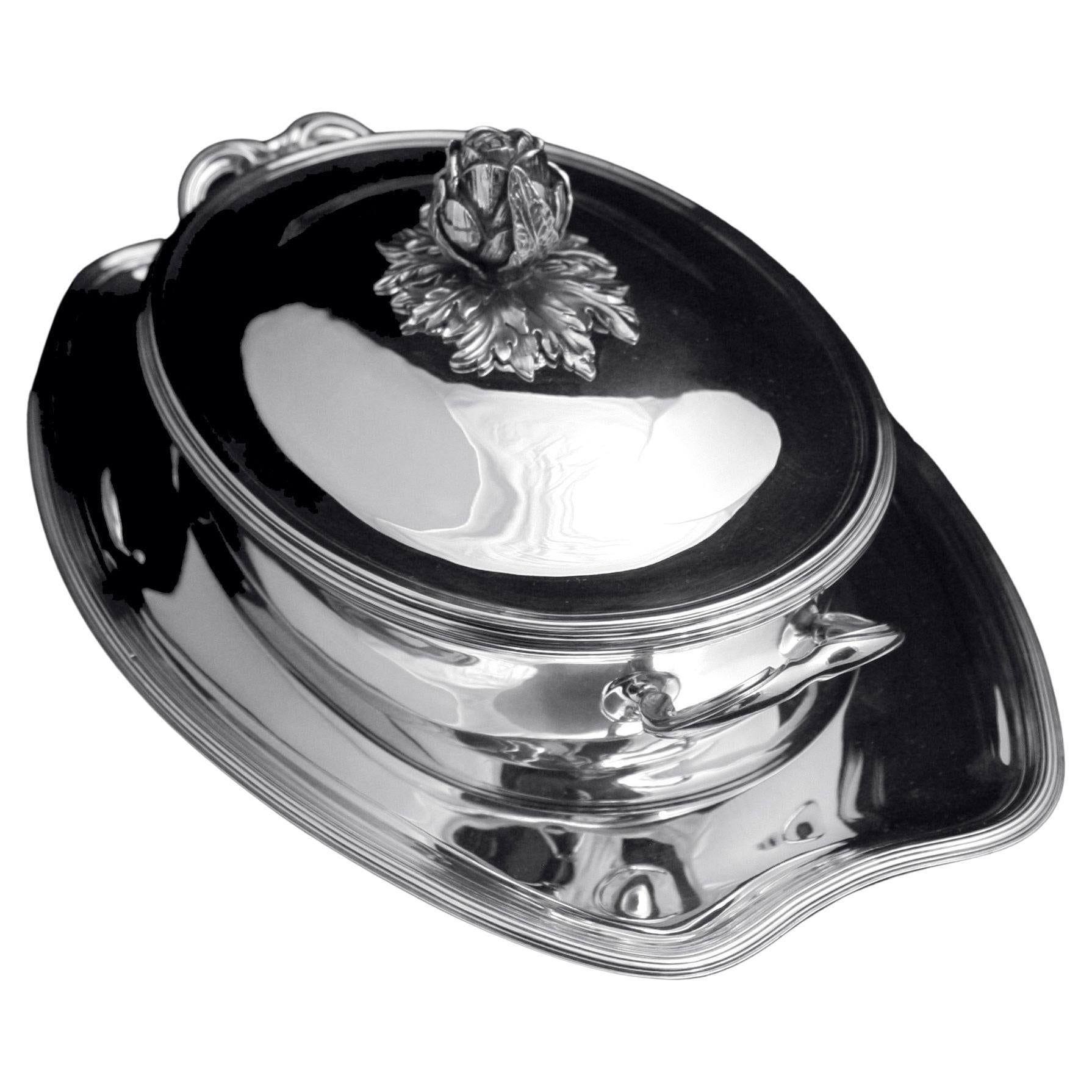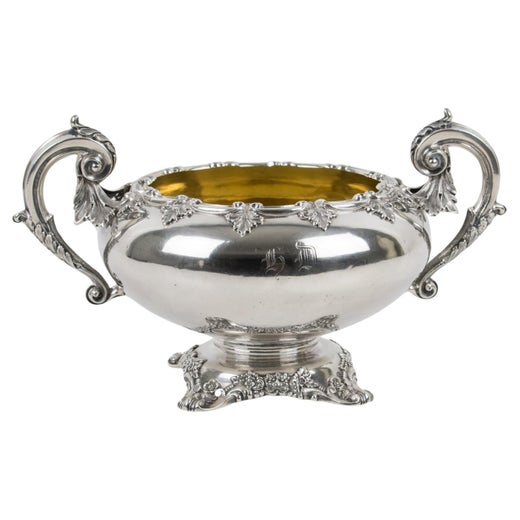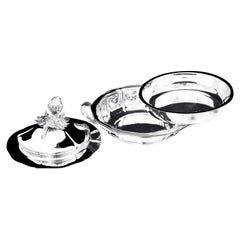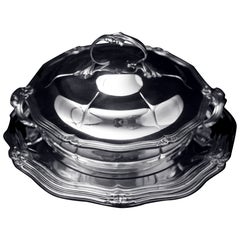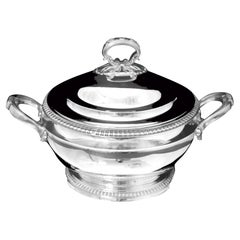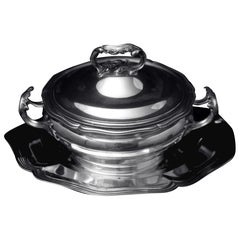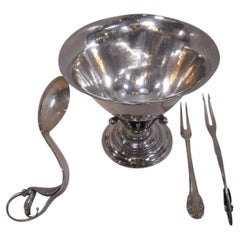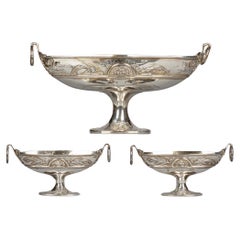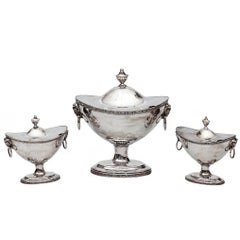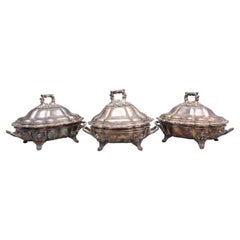Direct from Paris, France; a stunning 19th century antique French 950 sterling silver 3pc. covered vegetable server in "Like New" condition by renowned French silversmith “Odiot". luxury and elegance traditionally reserved for the French elite. The art of silver-smithing has a long and storied history, with many renowned artisans contributing to its development. Among these, the name Odiot stands out as a beacon of exceptional quality, exquisite craftsmanship, and timeless elegance. Founded in Paris in the late 17th century, the House of Odiot has become synonymous with luxurious silverware, revered by royalty and connoisseurs alike.
The story of Odiot begins in 1690 with the establishment of the company by Jean-Baptiste Gaspard Odiot in Paris. Jean-Baptiste was a skilled silversmith, whose work quickly gained recognition for its elegance and superior craftsmanship. However, it was his grandson, Jean-Baptiste Claude Odiot, who truly elevated the family's legacy. Jean-Baptiste Claude Odiot (1763-1850) took over the family business during the tumultuous period of the French Revolution. Despite the challenges of the era, he managed to secure significant commissions, including work for Napoleon Bonaparte. Odiot became the official silversmith to Napoleon, creating some of the most iconic pieces of the Empire style, characterized by its grandeur and classical influences. This period marked the beginning of Odiot's enduring association with royalty and the elite.
Throughout the 19th century, the House of Odiot continued to flourish under the leadership of Jean-Baptiste Claude's descendants. They expanded their clientele to include many European royal courts, further cementing their reputation as one of the premier silversmiths of the time. The Odiot name became synonymous with luxury and refinement, a legacy that continues to this day. The hallmark of Odiot's silverware is its unparalleled quality and meticulous craftsmanship. Each piece is a testament to the skills and dedication of the artisans who create them. Odiot's workshops have always been known for their commitment to traditional techniques, while also embracing innovation to enhance their creations.
The process of creating Odiot silverware involves several intricate steps, each requiring a high level of expertise. From the initial design to the final polishing, every stage is carried out with precision. The designs often draw inspiration from classical motifs, reflecting the neoclassical and Empire styles that have long been associated with the brand. The attention to detail is remarkable, with intricate engravings, repoussé work, and finely chased decorations adorning many of their creations. One of the most impressive aspects of Odiot's craftsmanship is their ability to seamlessly blend artistry with functionality. Their pieces are not only beautiful but also practical, designed to be used and cherished for generations. This combination of aesthetics and utility is a testament to their mastery of the silversmith's art.
Odiot's association with royalty began with Jean-Baptiste Claude Odiot's work for Napoleon Bonaparte. The Emperor's admiration for Odiot's craftsmanship led to numerous commissions, including grandiose pieces for the Imperial court. One of the most famous works from this period is the massive silver gilt service created for Napoleon, which included elaborate centerpieces, candelabras, and tureens. The House of Odiot's reputation for excellence quickly spread beyond France. They received commissions from various European royal courts, including those of Russia, Sweden, and England. Notable patrons included Tsar Alexander I of Russia and King Charles X of France. Each of these commissions further solidified Odiot's status as the silversmith of choice for the elite. One of the most significant royal patrons of Odiot was Queen Marie-Amélie of France, wife of King Louis-Philippe. She commissioned numerous pieces from Odiot, including a stunning silver tea service that exemplified the refined elegance of the era. The patronage of such high-profile clients not only provided financial stability but also enhanced the prestige of the Odiot brand.
Odiot's exceptional craftsmanship and innovative designs have earned them numerous awards and accolades over the centuries. Their participation in various international exhibitions and fairs has consistently garnered praise and recognition. One of the earliest accolades came at the 1802 Exposition des Produits de l'Industrie Française, where Jean-Baptiste Claude Odiot was awarded a gold medal for his outstanding work. This recognition helped to establish his reputation as one of the leading silversmiths of his time. Odiot continued to receive acclaim at subsequent exhibitions, including the 1823 Exhibition in Paris and the Great Exhibition of 1851 in London. At the Great Exhibition, Odiot's display of silverware was met with great admiration, earning them a medal and further solidifying their international reputation. In addition to these public accolades, Odiot has also received numerous private commissions and honors from royal families and dignitaries. These endorsements serve as a testament to the enduring appeal and unmatched quality of their creations.
Among Odiot's many masterpieces, their 950 sterling silver vegetable servers (tureens) stand out as exemplary pieces of functional art. These tureens are not only utilitarian objects but also magnificent works of art that showcase the finest elements of Odiot's craftsmanship. The design of these vegetable servers is a harmonious blend of elegance and practicality. Each tureen is crafted from 950 sterling silver, ensuring a brilliant finish and exceptional durability. The higher silver content compared to standard sterling silver gives these pieces a richer, more lustrous appearance, making them the centerpiece of any dining table.
The tureens are often adorned with intricate engravings and repoussé work, featuring classical motifs such as acanthus leaves, scrolls, and floral patterns. These decorative elements are meticulously crafted, demonstrating the skill and attention to detail that are the hallmarks of Odiot's work. The lids of the tureens typically feature elegantly sculpted handles, often in the form of naturalistic shapes like fruits or leaves, adding a touch of whimsy to the overall design. Functionality is a key consideration in the design of Odiot's tureens. The lids fit snugly to keep the contents warm, and the handles are designed for ease of use. The interiors are often gilded, providing a beautiful contrast to the silver exterior and ensuring that the tureens are not only visually stunning but also practical for serving food.
One of the most remarkable aspects of Odiot's tureens is their ability to convey a sense of timelessness. Despite being created in the 19th century, their designs remain relevant and appealing today. This enduring quality is a testament to the mastery of the artisans at Odiot, who have managed to create pieces that transcend the fashions of their time. The House of Odiot is a true testament to the art of silver-smithing, combining a rich history with an unwavering commitment to quality and craftsmanship. From their early days in the late 17th century to their status as a premier silversmith for European royalty, Odiot has consistently produced pieces of exceptional beauty and functionality. Their 950 sterling silver vegetable servers (tureens) exemplify the best of their work, showcasing intricate design, superior materials, and practical elegance. Odiot's legacy is one of timeless sophistication, where each piece tells a story of artistic excellence and dedication to the silversmith's craft. Their contributions to the world of luxury silverware continue to be celebrated and cherished, ensuring that the name Odiot remains synonymous with the highest standards of beauty and craftsmanship.
This amazing 3-piece 950 sterling silver vegetable server is a stunning example of the quality and craftsmanship for which Odiot is international known. It measures approximately 16.00 cm. high to the top of the lid; roughly 31.00 cm. across to the tips of the handles; has an outside diameter of 25.00 cm.; an inside diameter of 20.50 cm. and weights 1,712 grams. Each of the 3 pieces is stamped with the French Governments Head of the Minerva 1 hallmark and the server is stamped "Odiot a Paris" on the underside along with the House of Odiot sterling silver manufacturer's hallmark. You can’t go wrong buying quality.
